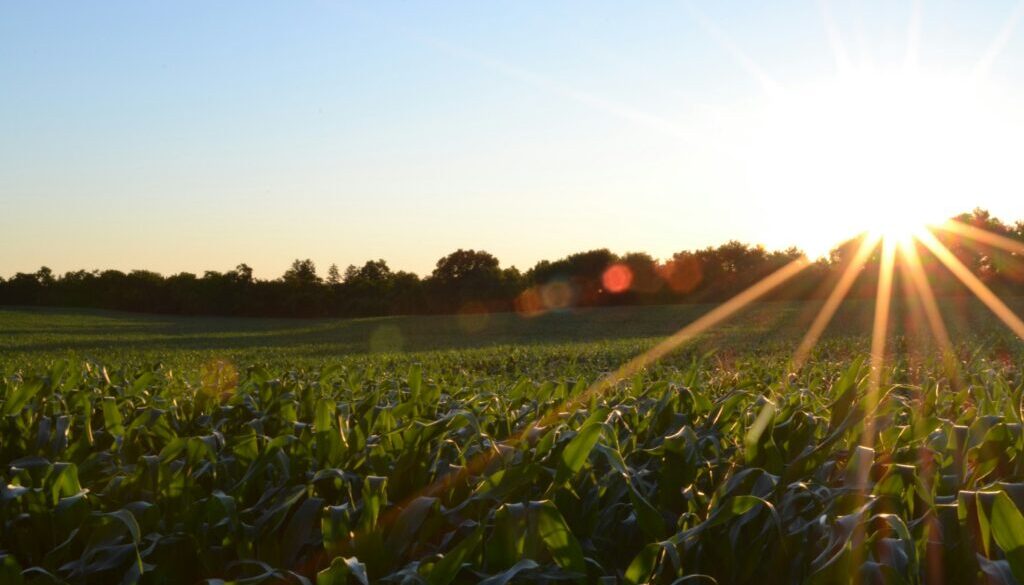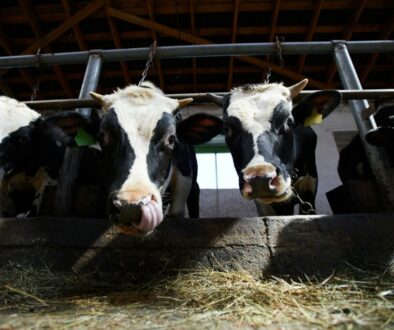Senate Farm Bill draft raises hopes for PFAS-impacted farmers
As US lawmakers haggle over the renewal of the massive Farm Bill, which funds programs ranging from food access for low-income families to crop insurance for farmers, one new issue sparking debate is a proposed safety net for farmers whose land has become contaminated with dreaded “forever chemicals.”
A recent Farm Bill draft released by the US Senate Committee on Agriculture, Nutrition & Forestry, includes language from the proposed Relief for Farmers Hit with PFAS Act, which would direct the US Department of Agriculture (USDA) to designate $500 million in grants to states, territories, and Tribes to monitor and clean up per- and polyfluoroalkyl substances (PFAS) on agricultural land and in farm products. The funds would partly offset financial losses a farmer can suffer due to PFAS contamination.
The National Association of State Departments of Agriculture has said it sees PFAS as an “emerging risk” that poses a “major hazard” to US farmers and ranchers.
And last year, the US Department of Defense said it had notified almost 4,000 farms across dozens of states to warn that they were at risk for PFAS contamination. Many farmers in Maine have learned that their land is contaminated, as have farmers in Texas, New Mexico and elsewhere.
The US House of Representatives will hold a “committee markup” on May 23, a process that will result in a final draft, but neither an early overview of the House committee’s draft nor a more detailed version released Friday mention funding for PFAS-impacted farmers.
“We can find all kinds of money for increasing our defense budget and a whole host of other things,” said US Rep. Chellie Pingree, a Democrat from Maine. “It seems unfair to not find the money for farmers who are in need. I think in the long run we will find that money.”
Pingree, who introduced the Relief for Farmers Hit with PFAS Act together with Sen. Susan Collins, a Maine Republican, said that if the language that’s currently in the Senate isn’t included in the House version, she may draft and push for an amendment during the markup process.
The Relief for Farmers Hit with PFAS Act is modeled on Maine’s new $60 million PFAS fund, which began accepting applications in March.
Like that program, the proposed legislation would offer impacted farmers direct financial support, including income replacement (while the bill doesn’t specify how much, Maine funds farmers for up to one year). It would also assist farmers in transitioning to a different revenue stream, relocating their farm, or selling their contaminated land to the state, if necessary, at fair market value. The bill also proposes providing farmers with access to blood serum testing, to help them monitor for health problems linked to PFAS exposure.
Falling through the cracks
PFAS encompass a class of around 15,000 humanmade chemicals that do not break down naturally and widely contaminate the environment. PFAS have been used for decades to make a range of products, including nonstick cookware, stain-resistant carpet and food packaging. The chemicals have been linked to a range of health problems in humans, including certain cancers and suppressed immune systems in children.
An estimated 83% of waterways across 34 states are contaminated with at least one PFAS chemical, according to the Waterkeeper Alliance, while over 600 animal species around the world are at risk from PFAS exposure, found the Environmental Working Group (EWG).
PFAS sometimes seeps onto farmland through groundwater laced with the chemicals. PFAS can also travel onto farmland in contaminated sewage sludge used as fertilizer. Many of the affected farms in Maine were tainted by PFAS through the sludge spread on their land in the 1980s. Almost 20 million acres of US cropland are fertilized with sewage sludge, according to an estimate by EWG.
PFAS contamination presents a new challenge for farmers. If they test for PFAS contamination and find it, they can lose their ability to sell their crops or other farm products, and can suffer extreme financial losses. If they don’t test, they potentially risk bringing contaminated products into the marketplace.
Dairy farmers have been finding PFAS in the milk their cows produce. A Consumer Reports investigation reported this month that when testing 50 samples of milk for 16 PFAS chemicals, it found one type of PFAS in five samples purchased in California and Virginia and another type of PFAS in milk from Michigan.
The US Environmental Protection Agency (EPA) last month put in place a rule that establishes the nation’s first legally enforceable limits for six PFAS in drinking water, followed by a move to designate two widespread PFAS as hazardous substances under the Superfund law.
But no federal agency has yet implemented a program to assist farmers plagued by PFAS on their land or to establish guidelines for PFAS in food.
“If the text from the Relief for Farmers Hit with PFAS Act doesn’t make it into the Farm Bill, we’ll be in a position of continuing to have a patchwork response across the country where different states are going to respond in different ways and there’s inconsistency in that response,” said Shelley Megquier, the policy and research director for Maine Farmland Trust, which advocates for the protection of farmland.
“That will, unfortunately, mean that some farmers are severely impacted, go out of business and really fall through the cracks.”
A “good interim step”
Advocates for including PFAS relief in the Farm Bill say that the provisions would be a badly needed safety net for farmers.
“If people are looking at investigating a problem and potentially losing everything in the process, that is a terrible incentive structure,” said Adam Nordell, a Maine farmer and campaign manager for the nonprofit Defend Our Health. Nordell lost his organic vegetable farm in Maine after discovering it was contaminated with PFAS from sludge spread decades earlier.
“This bill is not going to make impacted farmers whole, but it provides some real resources to people who need them, and we all benefit from that,” he said.
Having language included in the Senate’s Farm Bill draft is a “huge win,” Nordell said. Despite the lack of PFAS-related language in the current House Farm Bill draft, Nordell said he has seen signs of growing support.
The American Farm Bureau Federation generally supports the idea of financial aid for farmers to address PFAS remediation but has yet to throw its support behind language in the Senate Farm Bill draft as it awaits more details on what a final measure might look like, said Courtney Briggs, senior director of government affairs for the Farm Bureau, which advocates for farmers and ranchers.
Still, some supporters of the language in the Senate draft feel that the government would still need to take further action to fully support farmers in their battle against PFAS. For example, the draft does not mention medical monitoring for farmers, farmworkers and their communities, a service Nordell says is “really critical” for protecting them from PFAS-related illnesses.
And even if support for farmers coping with PFAS does appear in the final Farm Bill, it would still only be a “good interim step” rather than a full-fledged solution, said Sarah Alexander, executive director of the Maine Organic Farmers and Gardeners Association.
“Ultimately, we need USDA, [the Food and Drug Administration] and EPA to have a more coordinated effort as it relates to PFAS in agriculture,” she said.




